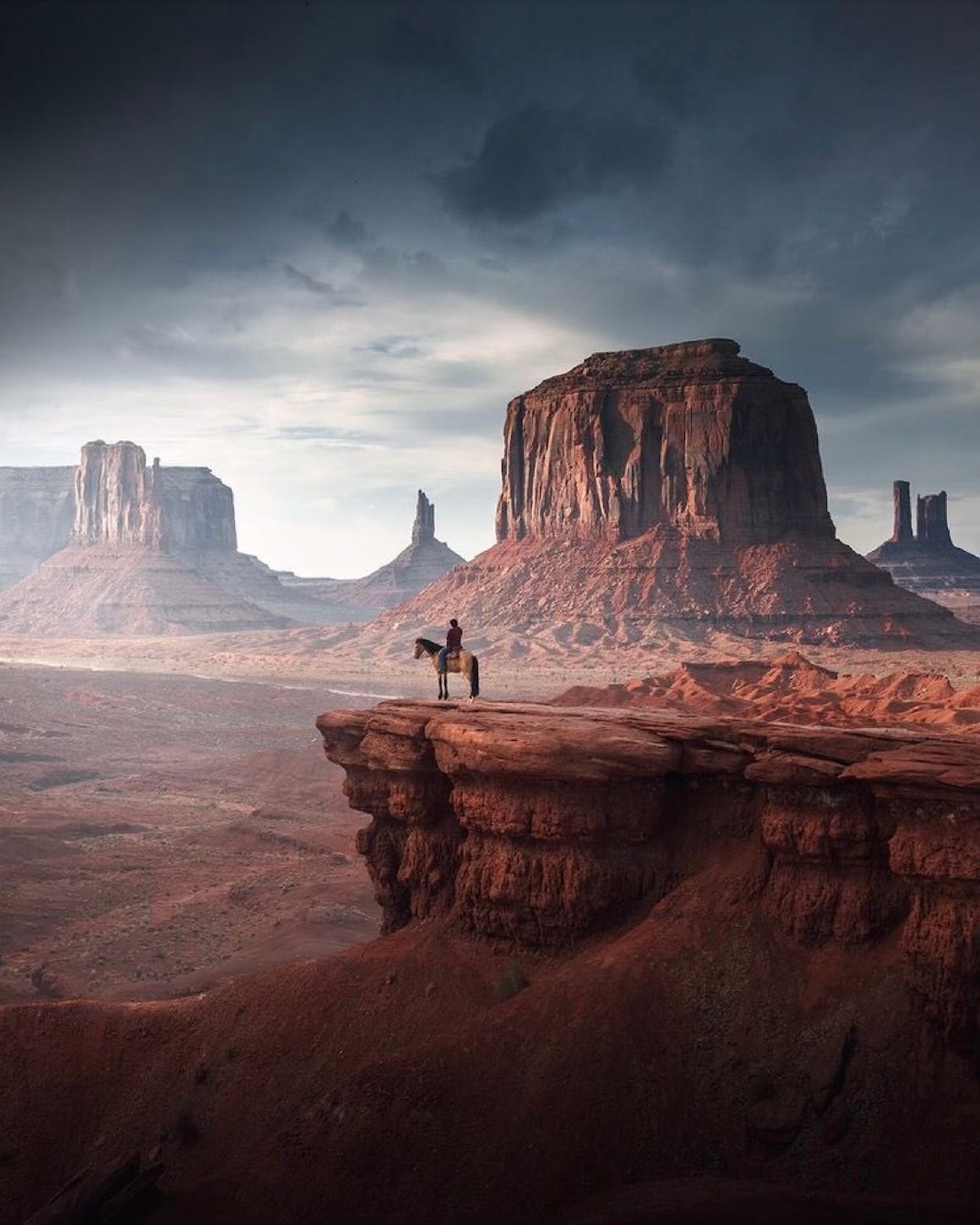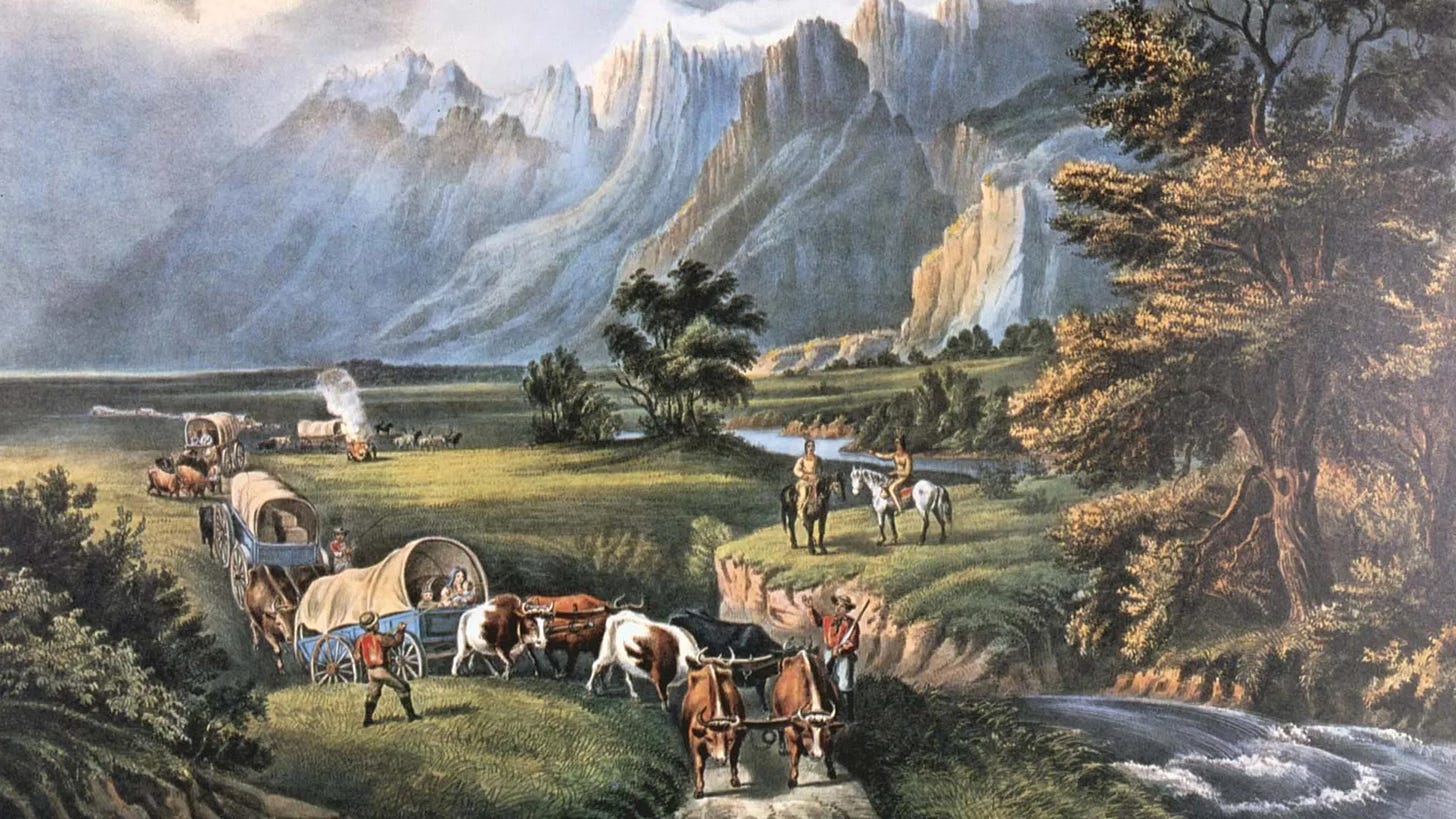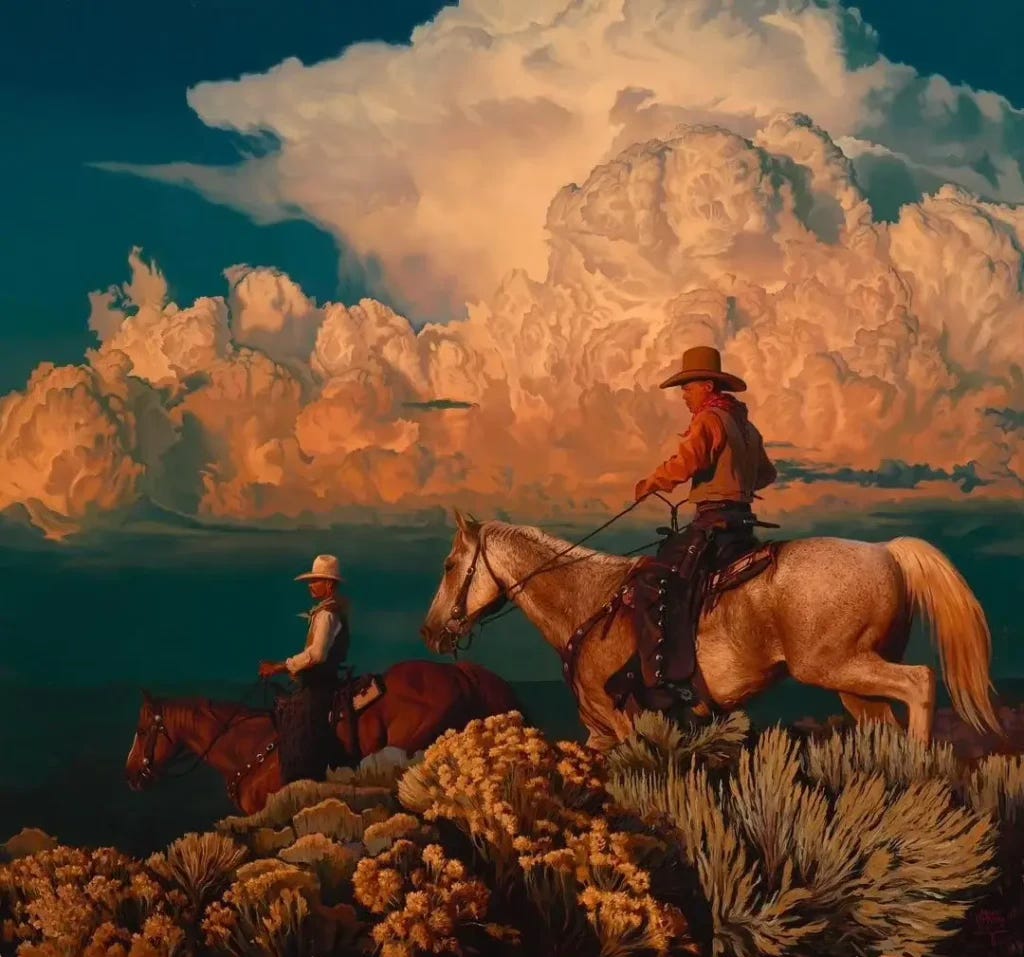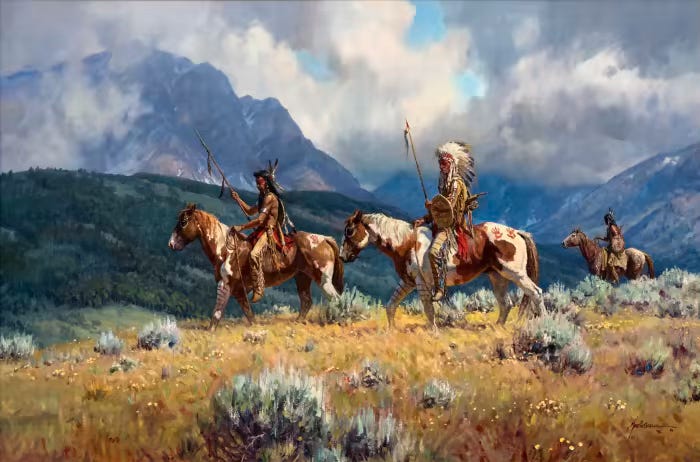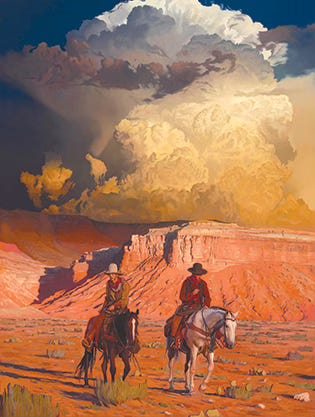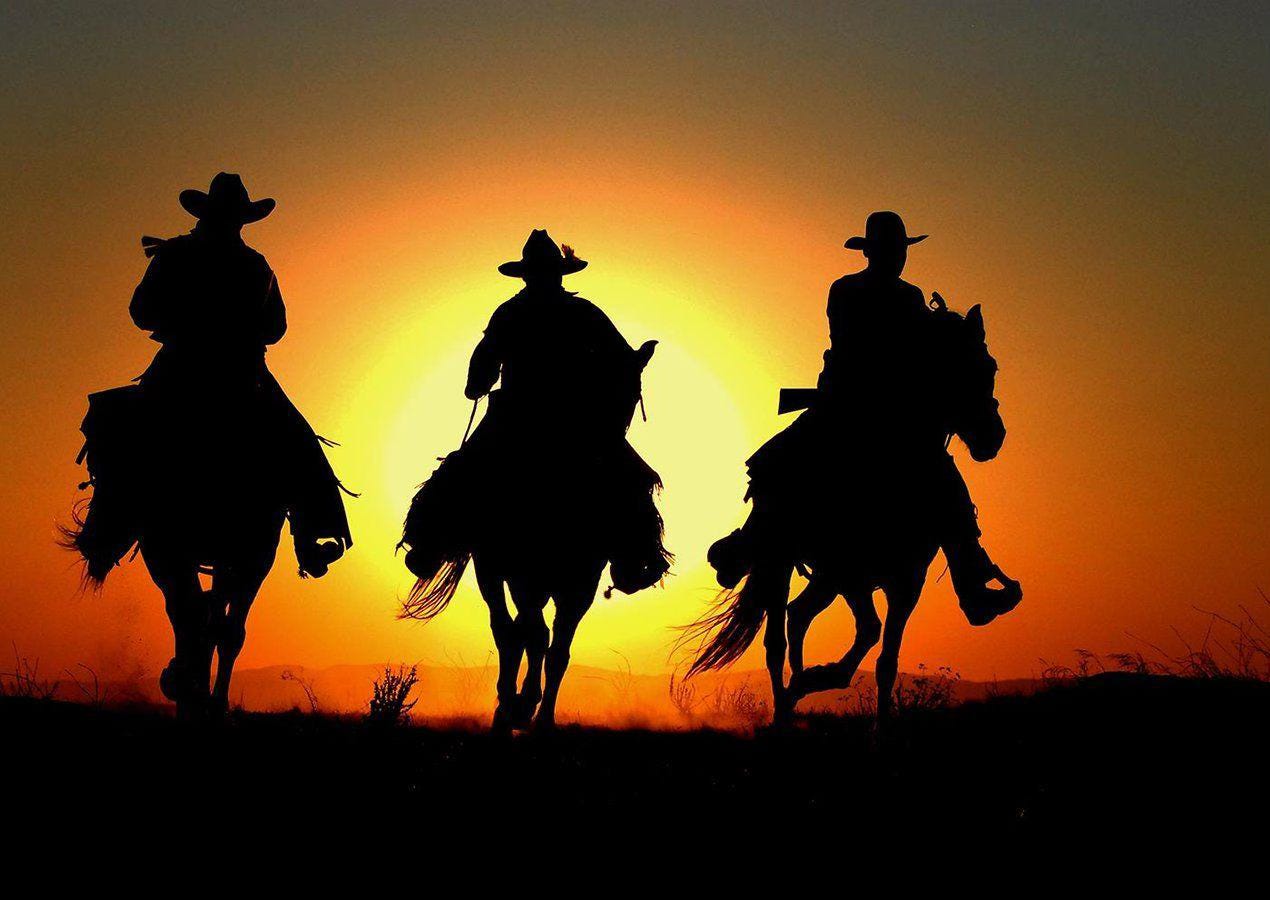The American Frontier: How the American West Captured a Nation’s Soul
The American West. Few places in the annals of history evoke as much mystery, adventure, and sheer audacity as the vast frontier that once stretched across this great land. It was a realm of opportunity and danger, of pioneers and dreamers, of cowboys and outlaws. In every sense, it was the crucible in which the American spirit was forged.
The Wild West, as we have come to call it, was as much myth as reality. Take, for example, the romanticized image of cowboys as solitary heroes—when in truth, most were rugged laborers driving cattle across arduous trails. The infamous shootout at the O.K. Corral? It lasted mere seconds, far from the prolonged gunfights of legend. Even figures like Billy the Kid were often more opportunist than rebel. Yet, these myths endure, adding color to a history already brimming with daring and determination. Yet it was also the proving ground for the values that define us still: grit, self-reliance, and an unyielding determination to carve something extraordinary out of the wilderness. Today, we journey back to that rugged landscape to separate legend from reality and celebrate the indomitable spirit of those who dared to make it their home.
The Pioneers and Settlers: Building a New World
When the first pioneers headed west, they did so not for fame or glory but for the promise of a better life. These were ordinary men and women who packed their lives into wagons, crossed rivers and plains, and braved unimaginable hardships to reach the land they called their destiny.
Manifest Destiny and the Westward Push
The concept of Manifest Destiny—the belief that Americans were divinely ordained to expand across the continent—spurred millions to journey westward in the 19th century. This migration wasn’t without cost. Families often sold everything they owned for the chance to start anew, facing months of perilous travel through uncharted territory. The Oregon Trail, a 2,170-mile route to the fertile valleys of the Pacific Northwest, became both a pathway to prosperity and a gauntlet of hardship.
Facing the Wilderness
These pioneers encountered obstacles that tested their mettle daily. They faced scorching heat, brutal winters, and the constant threat of illness or injury far from medical aid. Yet they pressed on. With each cabin raised and each field tilled, they turned the wilderness into thriving communities. These settlers laid the foundation for the states we now cherish, proving that courage and perseverance can indeed tame the wild.
Cowboys and Outlaws: Separating Fact from Fiction
When we think of the Wild West, the image of a lone cowboy silhouetted against a blazing sunset comes to mind. Or perhaps we imagine infamous outlaws, guns blazing, wreaking havoc in dusty frontier towns. But who were these figures, really?
The True Life of a Cowboy
Hollywood has glamorized the cowboy, painting him as a rugged hero living by a code of honor. Think of John Wayne in Stagecoach or Clint Eastwood’s Man with No Name in The Good, the Bad and the Ugly—stoic, larger-than-life figures who conquered the Wild West with grit and determination. While these portrayals have captured imaginations for decades, they often overlook the grueling realities of cowboy life, where the daily grind involved long hours, minimal pay, and constant exposure to the elements. The reality was often far less romantic. Cowboys were hardworking laborers, driving cattle across vast stretches of land to railheads where the animals could be shipped east. They endured long days in the saddle, harsh weather, and the constant threat of stampedes or rustlers. Yet their perseverance made them legends, embodying the independence and tenacity we hold dear.
Outlaws and Lawmen
The frontier was also home to its share of nefarious characters—men like Jesse James, Billy the Kid, and Butch Cassidy. These outlaws captured the public imagination, their exploits often exaggerated in dime novels that painted them as rebellious antiheroes. But just as the frontier bred outlaws, it also produced legendary lawmen like Wyatt Earp and Bat Masterson, who fought to bring order to the chaos. Their stories remind us that justice, though hard-won, has always been an integral part of the American ethos.
Native American Perspectives: A Complex History
No exploration of the American frontier would be complete without acknowledging the Indigenous peoples who lived there long before settlers arrived. For them, the westward expansion was not a tale of opportunity but one of profound loss and resilience.
The Impact of Expansion
As settlers moved west, they encroached on lands that Indigenous tribes had called home for centuries. Treaties were made and broken, and conflicts like the Battle of Little Bighorn and the Trail of Tears remain painful chapters in American history. Yet the resilience of these tribes is a testament to their enduring spirit.
Legends of Resistance
Figures like Sitting Bull and Geronimo emerged as symbols of resistance and defiance. Sitting Bull’s leadership at the Battle of Little Bighorn showcased his strategic brilliance and commitment to defending his people’s way of life. Meanwhile, Geronimo’s daring escapes and relentless resistance against U.S. and Mexican forces made him a symbol of unyielding courage in the face of impossible odds. Their stories, though often tragic, highlight the courage and tenacity of Native peoples in the face of overwhelming odds. Today, efforts to preserve Native American history and culture are a crucial part of understanding the full story of the frontier.
The Legacy of the Frontier: Shaping the American Identity
Although the American frontier officially closed in 1890, its spirit lives on. The values that defined it—independence, resilience, and a willingness to take risks—remain deeply ingrained in our national character.
National Parks: Preserving Frontier Landscapes
Many of the breathtaking landscapes that once defined the frontier are now protected as National Parks. The establishment of Yellowstone in 1872, as the first National Park, set the stage for a nationwide conservation movement, championed by figures like John Muir and Theodore Roosevelt. Roosevelt himself, often called the "Conservation President," played a pivotal role by protecting over 230 million acres of public land, ensuring that these natural wonders could be enjoyed by generations to come. Yellowstone, the Grand Canyon, and Yosemite are just a few examples of how America has chosen to preserve its wild beauty. These parks are not just natural wonders; they are living monuments to the frontier spirit that sought to explore and protect the unknown.
The Frontier in Popular Culture
From classic Western films to modern television dramas like Yellowstone, the frontier continues to capture the imagination. These stories, whether fictional or historical, keep the legacy of the Wild West alive, reminding us of a time when the horizon represented boundless possibility.
Why the Frontier Matters Today
In today’s world, the lessons of the frontier remain as relevant as ever. As we face new challenges—from technological advancements to environmental concerns—the resilience, ingenuity, and determination of those who tamed the Wild West can inspire us to tackle the future with the same boldness.
Innovation and Independence
The frontier was a place where people had to innovate to survive. Take, for instance, the invention of the sod house, which provided shelter to settlers in the treeless prairies. These homes, built from densely packed earth, were practical and durable, showcasing the ingenuity of pioneers who used the resources at hand to create a safe haven. Similarly, innovations like the steel plow revolutionized farming in tough soils, enabling settlers to thrive in environments previously deemed uninhabitable. Whether it was developing new farming techniques or building communities from scratch, settlers demonstrated that necessity is indeed the mother of invention. This spirit of innovation continues to drive America forward, from Silicon Valley to the heartland.
Conclusion: Carrying the Frontier Spirit Forward
The American frontier was more than a place—it was an idea, a challenge, a dream. It was the ultimate test of courage and perseverance, a proving ground for the values that make America exceptional. As we look back on this remarkable era, we do so not with nostalgia but with pride, recognizing the lessons it offers for the challenges ahead.
So, let us celebrate the legends and realities of the Wild West. Let us honor the pioneers, cowboys, lawmen, and Native peoples who shaped this land. And let us carry forward the frontier spirit, knowing that the horizon still holds boundless possibilities for those bold enough to reach for it.
What does the frontier spirit mean to you? Share your thoughts and stories with us, and subscribe to The Great American Gazette to explore more of the tales that define our great nation.




